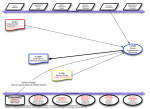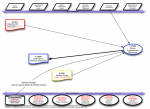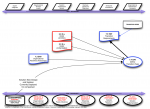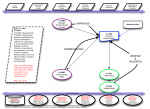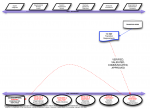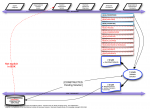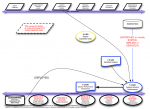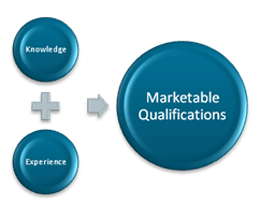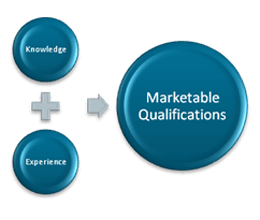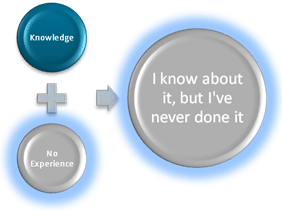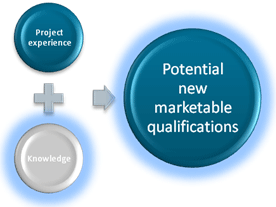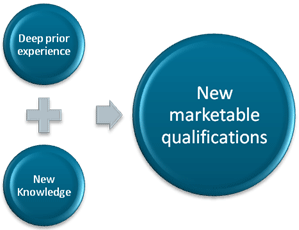The Kaizen Business Analyst
As Business Analysts, we are often focused on helping our stakeholders improve their processes and operations. We have worked to understand their current state, identify requirements, and engage others to help deliver innovative solutions that set up our customers for success. Most Business Analysts I’ve met get a great deal of satisfaction in finding ways to help people or companies do their jobs more effectively. Sometimes we become so outwardly focused that it can be easy to forget that it is important to take the time to work on improving our own processes. By finding ways to make our own practices better, we can increase the value we deliver to our organizations and stakeholders.
When looking to improve ourselves professionally, we can identify and try to implement changes big and small. Big, sweeping changes are often the most difficult to achieve, regardless of whether you are a 10,000-person organization or a single individual. Big changes are met with fear, doubt, inertia, laziness, and many other barriers. Our initial enthusiasm can dwindle if we don’t start to see immediate results, and in the end we consciously or unconsciously decide to abandon the change. This is why so many of us fail our New Year’s resolutions; often they are big visionary statements that involve a large amount of change.
Instead of trying to make big changes, we can focus on implementing a personal development process that allows us to improve our services continually with small but meaningful changes. The Japanese term Kaizen means ‘continuous improvement,’ and methodologies have been developed to implement Kaizen in small, incremental, and purposeful steps to yield dramatic changes over time. Kaizen has been used in lean manufacturing methods at companies such as Toyota, Intel, and Lockheed Martin. While this methodology has been used mainly in manufacturing, it is focused on helping individuals and small teams become as efficient and effective as possible at the job they do.
Some of the main principles of a Kaizen approach to continuous improvement are:
- Think of ways to make something happen, as opposed to reasons why something can’t be done.
- Do not seek perfection; start change right away and build on that change over time.
- When something doesn’t work as expected, take the time to understand the root causes of why things went wrong.
- When faced with hardship, take the wisdom gained and look to apply it to your next task.
- Measure your successes and failures so you can actually tell if you are improving.
This approach not only works for teams, but also for individuals. We can use the principles of Kaizen to ensure that we are always finding ways to make our work better, which in turn improves the lives of our customers. Here are some steps to becoming a Kaizen Business Analyst:
- Develop your mindset: when you first arrive at work, take 30 seconds to remind yourself that today is an opportunity to find ways to do your work better. Review what you will be doing today and your plan to get things done.
- Document your performance: while you are working, take the time to quickly jot down how long things take you to get done. For tasks that are part of a bigger multi-day goal (for example, having requirements reviewed), build a very simple spreadsheet or leverage your organization’s timesheet to track your total time on an activity. Aside from time spent on a task, find other relevant measures given the type of work you do; for example, how many rounds of review are required prior to requirements being signed off? Think of the relevant performance measures for your analysis activities and track them over time.
- Reflect on your activities: at the end of the day, take a quick review of the work you did and reflect on what went well and what didn’t go as ideal. Make some quick notes and associate them with the relevant tasks they belong to. For areas that didn’t go as well, write down one to two things that could have been done differently that would have improved the outcome. Take a look at your tasks for the next day, and with your history of ideas for improvement in hand, identify what you will try differently tomorrow. If you have identified ways that you could improve but need outside assistance to make them happen, plan who you will connect with to help get the ball rolling on implementing those changes.
- Experiment with new ideas: find interesting things that you think will help improve the quality or efficiency of your work and try them out. Whether it’s a new elicitation technique, a new conflict resolution approach for those two stakeholders who don’t get along, or a simplified model for your complicated business processes that you can share with executives, find an opportunity to test out your ideas. Make sure you record the results and compare them, both in terms of time spent and whether the desired outcome occurred.
- Share with others: this gives you a chance to contribute to the development of other Business Analysts while learning new ways to improve yourself. If you have a Community of Practice or a Centre of Excellence at your organization, there are usually opportunities for such collaboration. If your organization does not have such groups, start meeting with your peers informally; I’ve found BAs often like to talk shop and swap ideas over lunch every week or two. If you are the lone Business Analyst at your organization, find a local IIBA chapter or other Business Analyst community in your area to meet with colleagues. Various online Business Analyst communities have active forums that give you a chance to learn and share as well.
Having big goals can be an incredible motivator to help us achieve our potential and become successful. Sometimes it can be so easy to visualize what we want to accomplish that we attempt to make huge changes in order to reach our goal as fast as possible. However, as an old Chinese proverb reminds us, “It is better to take many small steps in the right direction than to make a great leap forward only to stumble backward.” Having a Kaizen approach to becoming a better Business Analyst gives us an opportunity to make small but purposeful changes each day that will make us key to our organization’s success and future.
Don’t forget to leave your comments below.
Jarett Hailes is President of Larimar Consulting Inc. and a Certified Business Analysis Professional. Over the past ten years, Jarett has worked in a wide variety of industries as a Management Consultant, Business Analyst and Project Manager. Jarett’s passion is to help organizations realize the potential of their staff through efficient processes and an open culture that encourages and rewards innovation at all levels.
